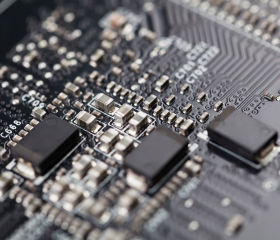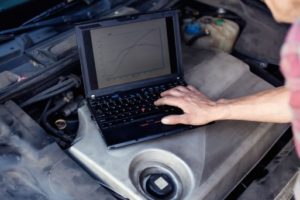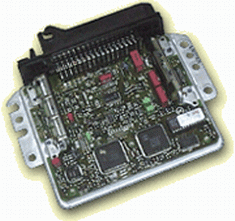Introduction - Chip tuning

chip tuning
Have you heard of chip tuning? If you haven't, it's the right time to finally learn something about this concept. Chip tuning means an electronic control unit that is put into vehicles, which means that it will have better performance, whether it be getting more power, lower emissions, or better fuel efficiency.
Generally speaking, the vehicles they have chip tuning they are more sensitive to fuel quality and need to be serviced on time. They first appeared in vehicles in the 25s. Chip tuning is actually a system that can control various operations in the engine, primarily fuel injection into the system and ignition, as well as actions such as speed control, closing and opening various valves, acceleration (on turbo machines), etc. Globally, the chip tuning system is most often installed in vehicles to increase engine power and torque (by about 15 percent) and to reduce fuel consumption by 20 to XNUMX percent.
chip tuning means that in the memory of the control unit on the engine, the factory parameters are changed, which are related to the ignition torque, the amount of fuel and the pressure with which the turbine is charged. The installation process can take from as little as 45 minutes to 4 hours or more, depending on how complicated the injection system and engine control are. There are several types of tuning - optimum tuning, eco tuning, power tuning, box tuning.
Inside alone Of the ECU there is a board with several chips, resistors and other electronic circuits. One of these chips is the EPROM, a memory chip that stores engine performance data. The EPROM contains maps with data on the ignition angle, the amount of fuel injected, the turbine pressure in the turbo engine, etc. The main task of chip tuning is to change the data on these maps, increase the amount of fuel injected, better and more accurate ignition angle, and in turbo engines increase the turbine pressure, which depends on the operating temperature of the engine. The result of proper chip tuning should be an increase in power and torque, and thus better performance of your car.
Installation of the chip itself located in ECU is a process dependent on the model and make of the car, but usually takes 2 to 3 hours. During this time period ECU is removed from the car, its lid is opened, it is removed EPROM which can be reprogrammed or replaced with another new EPROM, which is already programmed. It also opens the possibility of chip-tuning through the OBD (On Board Diagnostic Port) without removing the ECU, so that it can be connected via a laptop connected directly to ECU, upload the new settings and changes to the folder to EPROM. There is also another interesting option of installing a SWITCH (switch) where we can choose and decide when to use the default or changed settings.
When it comes to optimum tuning, this is the simplest and cheapest installation procedure chip tuning which gives the vehicle more power. Regular gasoline and diesel have the best results because they improve performance by up to 25 percent. This type of chip tuning means that performance is optimally better and it has no bad effect on the engine.
Eco tuning improves the performance of turbo diesel engines only and is fitted to vehicles over a very long distance. This type of tuning increases engine torque by up to 10 percent at lower rpm, while reducing vehicle consumption by up to 20 percent. It is important to note that the engine power of this type is not reduced chip tuning.
Power tuning is focused entirely on engine power, that is, extracting engine power to its optimum. Sometimes it can be increased by as high as 40 percent. Going to the limit, it can reduce the life of a car's engine, especially with a turbo engine.
Box tuning means a special module that is built into the vehicle and comes with a special adapter that is specific to each vehicle. It is a simple bypass that improves the performance of the car and does not damage the engine. It's actually a very similar system to that of optimum tuning.
So we can conclude that chip tuning in the optimal case it can improve engine performance and at the same time reduce consumption. However, one should inquire and be informed when it comes to a specific type of vehicle, because chip tuning does not have the same effect on all types of vehicles, ie it depends on whether it is an ordinary diesel or petrol or maybe a turbo machine and a gas car. On some vehicles, namely, chip tuning can act as doping on a person, which means that performance will improve in a certain time interval, but at the same time the engine will be damaged, and in the long run this is by no means a good solution. Sometimes it is better to invest the money that is thought to be invested in chip tuning in regular car servicing, because it pays off more in the long run. Therefore, when it comes to this innovation on the vehicle, be sure to think carefully and consult with your car mechanic.
Why didn't the factory do chip tuning?
Automobile factories must, before launching new vehicles, type approvals in certain establishments in charge of standardization and quality control of new vehicles. The primary test for new types of vehicles is the exhaust emission test. In order to meet increasingly stringent regulations, engineers at car factories are being forced to compromise. This practically means that they are forced to adjust exhaust emissions to strictly set standards at the expense of engine power. These standards are far more stringent and demanding than those required by a technical inspection carried out once a year when registering vehicles in the world and in our country.
So, what we do is bring these standards closer to the requirements of a technical inspection, which results in an increase in the power of your engine. You get an engine of the same power as it was developed on the test bench when designing, before reducing power to the detriment of meeting strict approval standards.
Of course, this does not mean that your vehicle will expel any black smoke from the exhaust or otherwise harm the environment and other road users. We also emphasize this in order not to misunderstand the above, because the difference in standards is visible only on special exhaust gas analyzers, and not visually or in any other way.
Recommendation of similar texts:

Hi there, I am Mladen and I am an auto enthusiast. I started this blog years ago to help like minded people share information about latest cars, car servicing ideas, used car info, exotic cars, and auto technology. You will find helpful articles and videos on a wide variety of cars - Audi, Mercedes, Toyota, Porsche, Volvo, BMW and much more. Ping us if you have anything cool to share on latest cars or on how to make older cars more efficient, or just want to say hi!








